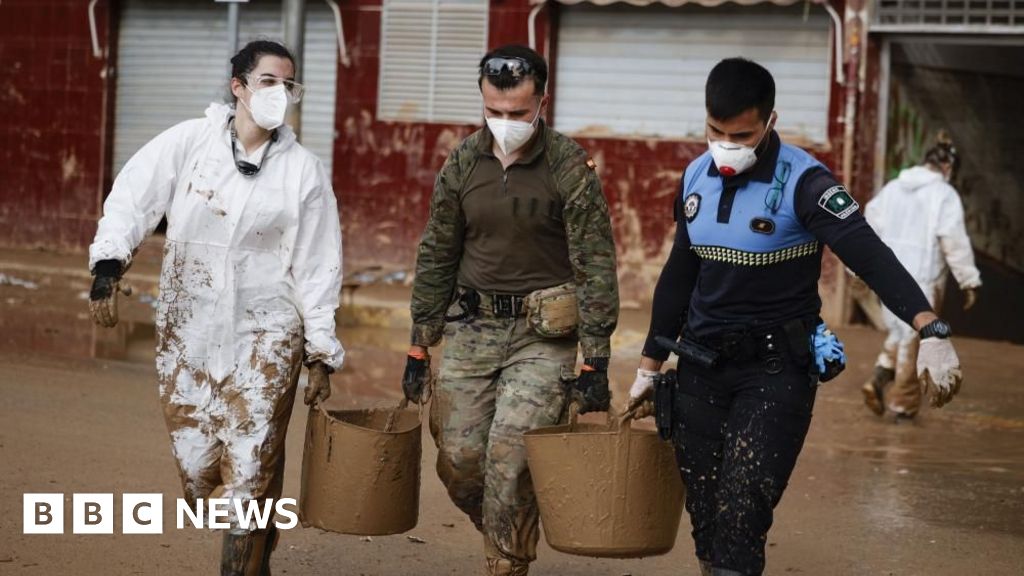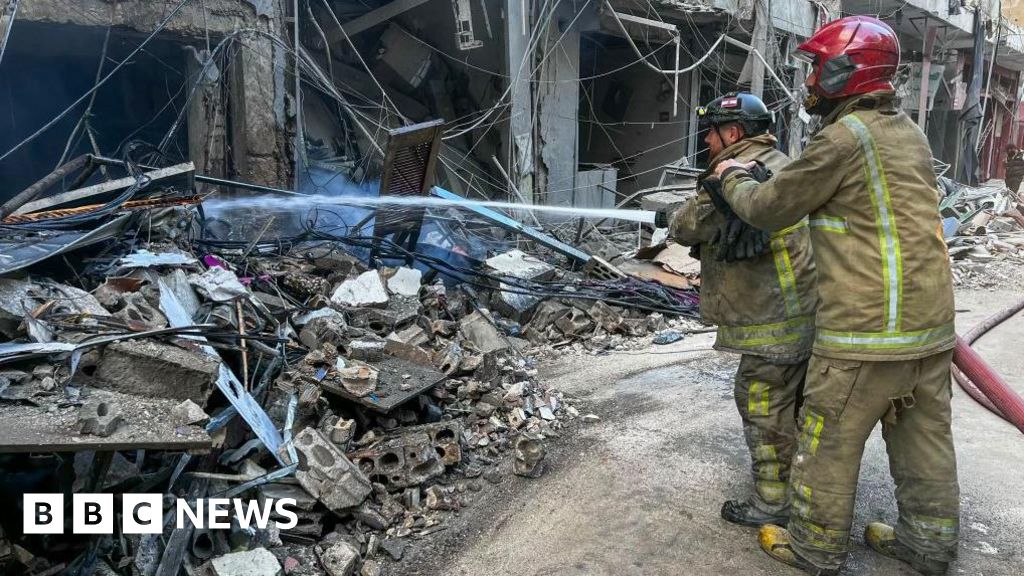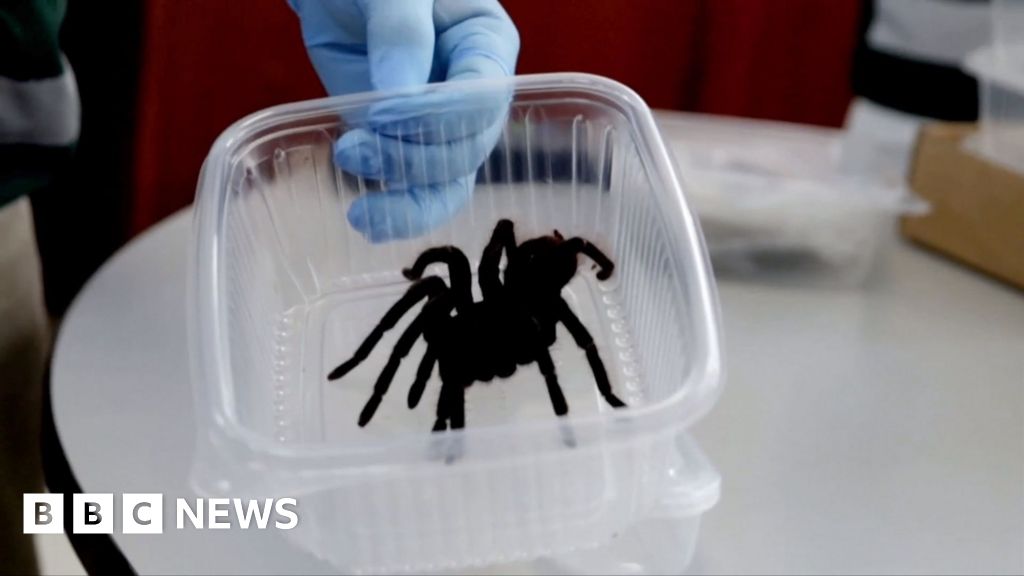ARTICLE AD BOX
 Image source, Western Australian Government
Image source, Western Australian Government
The hazardous device was ultimately found near the town of Newman, located along a 1400 km (870 mile) route from the Gudai-Darri mine to Perth
By Antoinette Radford
BBC News
On 25 January, when mining company Rio Tinto reported that one of their Caesium-137 radioactive capsules had gone missing, Western Australian authorities faced a seemingly impossible task.
They had to locate a pea-sized capsule anywhere along a 1,400km (870 mile) route stretching from the Gudai-Darri mine in the north of the state to a depot just north of Perth's city centre.
Authorities sprung into action, mobilising specialist search crews to look for the capsule, with career firefighters among those asked to foray from their usual summer tasks.
Experts were called in from across the country: nuclear science specialists, the emergency management agency and radiation protection officials.
Authorities believed the capsule had fallen off a radiation gauge that was being transported from a Rio Tinto mine site on 12 January to a storage facility in the north-eastern suburbs of Perth.
They thought vibrations during transit may have caused the bolts to become loose, allowing the capsule to fall through gaps in the casing and truck.
Caesium-137 (Cs-137) capsules are commonly used in radiation gauges in mining to measure the density of certain materials. But if you come into contact with one, it can cause severe burns and expose you to the equivalent of 10 x-rays per hour.
Before notifying the public to the threat, on 26 January, authorities began searching in Perth and around the mine site in Newman.
On 27 January, an urgent health warning was issued to notify the public about the risk posed by the radioactive capsule. Health authorities had a simple message to anyone who may come across it: Stay away.
"It emits both beta rays and gamma rays so if you have it close to you, you could either end up with skin damage including skin burns," the state's Chief Health Officer Andy Robertson warned.
Authorities were concerned it may have become lodged in the tyre of a passing car.
Image source, Radiation Services WA
Image caption,A gauge similar to the one the radioactive capsule fell off in Western Australia
By 27 January, search parties were in full force looking for the tiny capsule. But they were not scouting for it using their eyes - they were using portable radiation survey meters.
The survey meters are designed to detect radioactivity within a 20m radius.
"We are not trying to find the small capsule by eyesight. The radiation equipment will hopefully lead us to it," a police spokesperson said the following day.
Police focused their efforts on the GPS route the truck had taken, and on sites close to Perth's metropolitan and high-density areas.
One site along the Great Northern Highway was prioritised by police on 28 January after unusual activity on a Geiger counter - a device used for measuring radioactivity - was reported by a member of public.
But that search did not uncover the capsule.
The next day, additional resources requested from Australia's federal government had been approved and those overseeing the search began planning its next phase.
With the new equipment in Western Australia and ready for use by 30 January, the search ramped up.
An incident controller at the state's emergency services department, Darryl Ray, described the new tools provided by the government only as "specialised radiation detection equipment".
Local media reported that radiation portal monitors and a gamma-ray spectrometer were among the new items being used by search crews.
Radiation portal monitors detect gamma radiation and are typically used at airports to scan individuals to ensure they do not have radioactive substances on them. Gamma spectrometers measure the intensity of the radiation.
Mr Ray said the new detection equipment could be attached to vehicles so searches could be done from moving vehicles at about 50km/h.
"It will take approximately five days to travel the original route, an estimated 1400km, with crews travelling north and south along Great Northern Highway," he said.
But by the end of 31 January, the capsule continued to evade search crews.
"More than 660km has been searched so far - thank you to all agencies for their support," the Department of Fire and Emergency Services said.
Image source, Government of Western Australia
Image caption,A serial number allowed authorities to verify the capsule
So the next morning, when the government revealed the capsule had been found just two metres off the side of the highway at 11:13 local time Wednesday, it seemed the all-but-impossible had been achieved.
Authorities said search crews had "quite literally found the needle in the haystack".
"You can only imagine it's a pretty lonely stretch of road from Newman down to Perth," Fire and Emergency Services Commissioner Darren Klemm said at a press conference on Wednesday.
"You can't help but imagine there was an element of surprise from the people in the car when the equipment did spike up."
While hesitant to give the exact location the radioactive capsule was found - Mr Klemm described it as "the best possible outcome".
Local media reports suggest it was found some 74km from Newman - so around 200km from the mine site.
No one appeared to have been injured by the capsule, according to authorities, and it did not seem to have moved from where it fell.
Mr Klemm said the additional resources from the federal government proved key to finding the capsule.
He said the survey equipment used from the start to detect radioactivity - paired with the specialised equipment that physically located the capsule - is how a car driving past at 70km/h found it.
A check of the serial code on the capsule confirmed it was the right one.
Associate Professor Nigel Marks from Western Australia's Curtin University hailed the find as a "victory for science".
"You know it emits gamma radiation so the obvious thing is to comb the side of the road looking for something with a strong gamma signal... and sure enough that's exactly where they found it."
Dr Marks added that many "orphan sources" - a self-contained radioactive material - that get lost are generally not recovered.
"A surprisingly large number of these sources that get lost - never get found", he said.
"It's a regulatory failure, but I think the way they found it is really cool."
The chair of Australia's Radiological Council will now investigate exactly how the capsule was misplaced in the first place.
The outcome of the report will determine whether or not charges are laid against Rio Tinto.
After the capsule was found the Chief Executive of Rio Tinto, Simon Trott, said the company would "fully cooperate" with the investigation.
He added that Rio Tinto would foot the bill for the search if the government requested it.

 1 year ago
18
1 year ago
18








 English (US)
English (US)